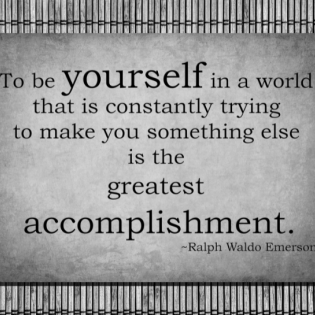Prioritizing Self-Care with a List
Self-care and social-emotional well-being are foundational aspects of effective philanthropy. By exploring their own needs and practicing empathy, youth learn to be constructive members of a community from a place of strength and balance. This lesson is best in collaboration with a social worker.
The learner will know and be able to:
- define empathy, self-care, and philanthropy.
- list personal interests and strategies for self-care.
- describe how caring for self can make it easier to help others.
- art supplies
- journals
- self-care: the act of preserving, protecting, or improving one's own well-being, health, and values, especially during stressful times
- empathy: the ability to understand and share the feelings of others
- philanthropy: giving time, talent, or treasure and taking action for the common good
Talk about the definitions of philanthropy and empathy and how they relate. Empathy is the ability to understand and share the feelings of others. How can empathy make philanthropy more equitable and inclusive?
Instructions
Background
The world is a better place because people give to one another in big and small ways. In your community, you may see BIG gifts funded by philanthropists, like parks and buildings named after the people who donated money. Philanthropy is also made up of small actions that promote the well-being of others and make the world a better place.
It isn't one-way giving; people give and receive gifts. A healthy community depends on people giving what they can and taking what they need. It is important to care for our own needs so we have the energy to care for others. When someone is overwhelmed by their own life, needs, and mental health issues, it is difficult to be generous or helpful. Balance allows for understanding of self and others and joy in giving and receiving.
You may hear people talk about self-care, especially as it relates to mental health. Talk about how this might look different in different cultures and at different ages.
We need to practice self-care as well as encourage our friends to understand what they need. Self-care is the act of preserving, protecting, or improving your own well-being, health, and happiness, especially during stressful times.
Self-care looks different for everyone because it is directly related to who we are. Talk with a small group about these elements of self-care:
- Self-care involves compassion for self. Treat yourself well and talk to yourself the way you talk to someone you love and respect.
- Self-care involves setting boundaries and making it clear to yourself and others what you can tolerate, handle, and take responsibility for.
- Self-care means you understand what is important to you and you prioritize it, whether that is hard work, honesty, caring for the environment, or another talent or value.
- Self-care means doing the things that give you strength, which may be speaking up, being alone, listening with care, or organizing your space. You know you.
Brainstorm as a group a list of self-care strategies or habits. What are some good practices or strategies for taking care of yourself as a habit or to rescue yourself when you are overwhelmed?
Ideas: Write in a journal. Take a walk. Talk to a friend or parent. Take a stand. Say and write the good things about yourself. Cook. Get out art materials. Exercise. Meditate. Brush your hair. Take a shower. Paint your nails. Make a list of things that are important to you or that give you energy. Organize your room.
Service Idea: Make a poster or PSA for your school newsletter with suggestions for before or after-school activities to support self-care.
Make your own list sparked from the group list. Some questions to help you think about your own self-care:
- What activities help you relax or feel good? What gives you positive energy or makes you happy?
- What are things you want to say no to? Express why you are saying no. This is not about avoiding responsibility.
- Who are the people who support you emotionally or listen to you without judgment? Describe the traits of a person who you can talk to when you're down.
- What do you need to feel physically healthy and energized? A salad or a walk in the woods? Write a goal related to your personal physical well-being.
Keep your list in a place and a format you will look at and use. You may need to keep some supplies handy, like art supplies, a journal, a music playlist, or an inspirational poster.
Some people keep the list handy for the times it is needed and they can't think straight. Some people use sticky notes with key phrases to remind. Share this list with someone you trust and tell them how you'll use it.
Philanthropy Framework
-
Strand PHIL.I Definitions of Philanthropy
-
Standard DP 01. Define Philanthropy
-
Benchmark HS.1 Define philanthropy to include giving and sharing; volunteering; and private individual action intended for the common good. Explain how a volunteer individual/group can act for the common good.
-
Benchmark MS.4 Give examples of how individuals have helped others.
-
-
Standard DP 06. Role of Family in Philanthropy
-
Benchmark MS.1 Identify how families contribute to the socialization of children.
-
-
-
Strand PHIL.II Philanthropy and Civil Society
-
Standard PCS 01. Self, citizenship, and society
-
Benchmark HS.3 Give examples of human interdependence and explain why group formation is one strategy for survival.
-
-
